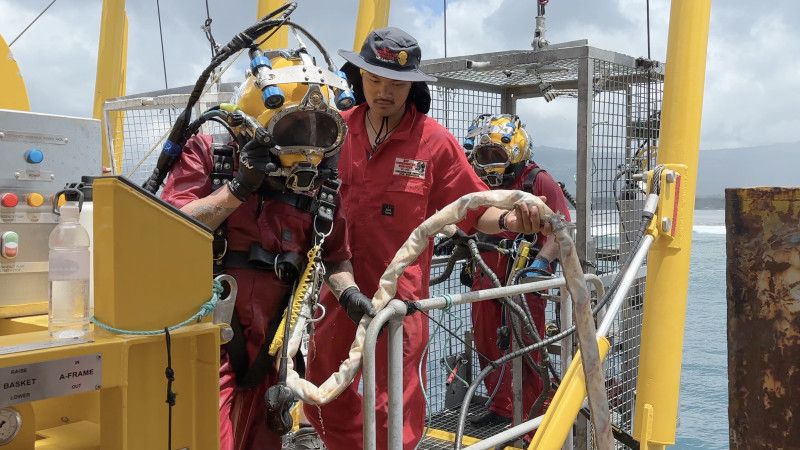

The salvage barge is waiting for better conditions to extract fuel from the HMNZS Manawanui, 150m below.
Photo/NZDF
Manawanui fuel extraction delayed, locals want answers
Progress on the HMNZS Manawanui fuel extraction has been stalled due to adverse weather conditions, the New Zealand Navy says.



Operation Xmas Drop 2025: US and allies deliver hope to remote Pacific communities

Our generosity is our strength but we must spend wisely this Christmas - expert

Heading off on a roadie? Here’s how to keep your car and whānau safe


Operation Xmas Drop 2025: US and allies deliver hope to remote Pacific communities

Our generosity is our strength but we must spend wisely this Christmas - expert
Fuel salvage efforts on the sunken New Zealand navy ship in Sāmoa have been hampered by wind and sea conditions.
It’s been three months since the HMNZS Manawanui struck a coral reef and sank 150 metres below the surface near the southern coast of Upolu, and the extraction process is now expected to take several weeks.
Senior National Representative for Operation Resolution, Commodore Andrew Brown, said the recovery phase is progressing despite the challenges.
“On Monday, due to deteriorating weather and sea conditions, the salvor moved the barge from above Manawanui to Port Apia to offload the recovered fuel and other pollutants held in the tanktainers.”
The barge has been taken further out to sea until the weather is more favourable.
Sāmoa’s Metservice has forecast southerly winds of 15-25km per hour for the next week with waves and swells of 1.5-2.5 metres. Sāmoa is also nearing the middle of the South Pacific cyclone season, which runs from November to April.
Christopher Battershill, a University of Waikato professor in coastal science, says a speedy cleanup is essential, but underwater extraction is challenging.
“Crew may need decompression chambers, and there’s only a narrow window of time to seal any fuel leaks – and, ideally, pipe out more than 900 tonnes of marine diesel the ship carries.”
Interrupted village and fishing life
Brown said the salvage barge began extracting fuel and other pollutants from the wreck at the beginning of the year using a technique called hot tapping.
“The salvor installs a valve at various locations on the ship’s hull before attaching a tap which is essentially a large drill to make a hole through the hull to access internal tanks.
“A hose is attached to the valve and the tank contents are pumped to the surface into tanktainers on the barge.”
Sāmoa’s Minister of Works, Transport and Infrastructure, Olo Fiti Va’ai, has declared a prohibited area around the site until the extraction process is finished.
“No person, vessels, or aircraft (manned or unmanned) are allowed to be present on or above the sea (less than 500ft above Sea level) within the two-kilometre radius of the HMNZS Manawanui.”

Salvor divers prepare for the HMNZS Manawanui fuel extraction. Photo/NZDF
But Tafitoala village mayor Taloaileono Vasasou told the Samoa Observer they had not received any updates from officials since October.
“There is still no word from them as of today. We are still banned from going fishing, and yes, our livelihoods are greatly affected because most families depend on fishing for income.
“Hopefully, we will hear from them this month or next.”
Brown says the removed fuel will be stored at Port Apia until the New Zealand government decides on “processes for disposal”, and they are working closely with the Sāmoan government.
“We acknowledge the concerns around this incident and appreciate the importance of the marine and coastal environments to the people of Sāmoa, and our focus continues to be on minimising any possible environmental impacts and supporting the response.
"These remain our absolute priorities, and the commencement of the removal of fuel and other pollutants from the ship is a major milestone in this process."